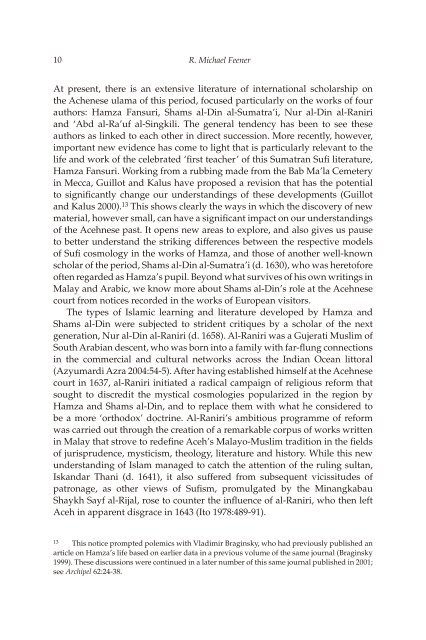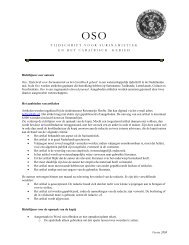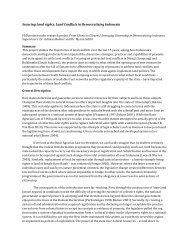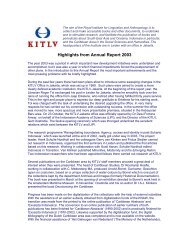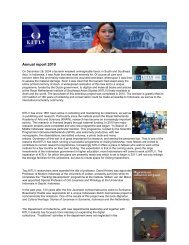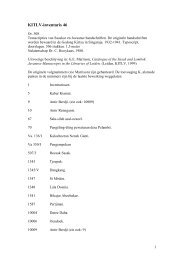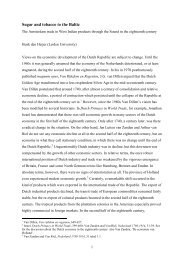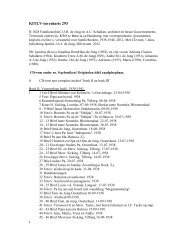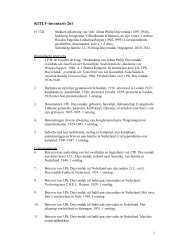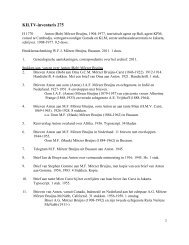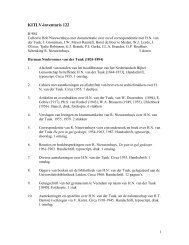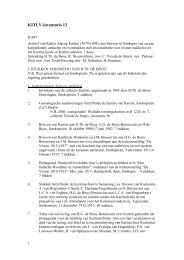The Acehnese past and its present state of study R. Michael ... - kitlv
The Acehnese past and its present state of study R. Michael ... - kitlv
The Acehnese past and its present state of study R. Michael ... - kitlv
You also want an ePaper? Increase the reach of your titles
YUMPU automatically turns print PDFs into web optimized ePapers that Google loves.
10 R. <strong>Michael</strong> Feener<br />
At <strong>present</strong>, there is an extensive literature <strong>of</strong> international scholarship on<br />
the Achenese ulama <strong>of</strong> this period, focused particularly on the works <strong>of</strong> four<br />
authors: Hamza Fansuri, Shams al-Din al-Sumatra’i, Nur al-Din al-Raniri<br />
<strong>and</strong> ‘Abd al-Ra’uf al-Singkili. <strong>The</strong> general tendency has been to see these<br />
authors as linked to each other in direct succession. More recently, however,<br />
important new evidence has come to light that is particularly relevant to the<br />
life <strong>and</strong> work <strong>of</strong> the celebrated ‘fi rst teacher’ <strong>of</strong> this Sumatran Sufi literature,<br />
Hamza Fansuri. Working from a rubbing made from the Bab Ma’la Cemetery<br />
in Mecca, Guillot <strong>and</strong> Kalus have proposed a revision that has the potential<br />
to signifi cantly change our underst<strong>and</strong>ings <strong>of</strong> these developments (Guillot<br />
<strong>and</strong> Kalus 2000). 13 This shows clearly the ways in which the discovery <strong>of</strong> new<br />
material, however small, can have a signifi cant impact on our underst<strong>and</strong>ings<br />
<strong>of</strong> the <strong>Acehnese</strong> <strong>past</strong>. It opens new areas to explore, <strong>and</strong> also gives us pause<br />
to better underst<strong>and</strong> the striking differences between the respective models<br />
<strong>of</strong> Sufi cosmology in the works <strong>of</strong> Hamza, <strong>and</strong> those <strong>of</strong> another well-known<br />
scholar <strong>of</strong> the period, Shams al-Din al-Sumatra’i (d. 1630), who was heret<strong>of</strong>ore<br />
<strong>of</strong>ten regarded as Hamza’s pupil. Beyond what survives <strong>of</strong> his own writings in<br />
Malay <strong>and</strong> Arabic, we know more about Shams al-Din’s role at the <strong>Acehnese</strong><br />
court from notices recorded in the works <strong>of</strong> European visitors.<br />
<strong>The</strong> types <strong>of</strong> Islamic learning <strong>and</strong> literature developed by Hamza <strong>and</strong><br />
Shams al-Din were subjected to strident critiques by a scholar <strong>of</strong> the next<br />
generation, Nur al-Din al-Raniri (d. 1658). Al-Raniri was a Gujerati Muslim <strong>of</strong><br />
South Arabian descent, who was born into a family with far-fl ung connections<br />
in the commercial <strong>and</strong> cultural networks across the Indian Ocean littoral<br />
(Azyumardi Azra 2004:54-5). After having established himself at the <strong>Acehnese</strong><br />
court in 1637, al-Raniri initiated a radical campaign <strong>of</strong> religious reform that<br />
sought to discredit the mystical cosmologies popularized in the region by<br />
Hamza <strong>and</strong> Shams al-Din, <strong>and</strong> to replace them with what he considered to<br />
be a more ‘orthodox’ doctrine. Al-Raniri’s ambitious programme <strong>of</strong> reform<br />
was carried out through the creation <strong>of</strong> a remarkable corpus <strong>of</strong> works written<br />
in Malay that strove to redefi ne Aceh’s Malayo-Muslim tradition in the fi elds<br />
<strong>of</strong> jurisprudence, mysticism, theology, literature <strong>and</strong> history. While this new<br />
underst<strong>and</strong>ing <strong>of</strong> Islam managed to catch the attention <strong>of</strong> the ruling sultan,<br />
Isk<strong>and</strong>ar Thani (d. 1641), it also suffered from subsequent vicissitudes <strong>of</strong><br />
patronage, as other views <strong>of</strong> Sufi sm, promulgated by the Minangkabau<br />
Shaykh Sayf al-Rijal, rose to counter the infl uence <strong>of</strong> al-Raniri, who then left<br />
Aceh in apparent disgrace in 1643 (Ito 1978:489-91).<br />
13 This notice prompted polemics with Vladimir Braginsky, who had previously published an<br />
article on Hamza’s life based on earlier data in a previous volume <strong>of</strong> the same journal (Braginsky<br />
1999). <strong>The</strong>se discussions were continued in a later number <strong>of</strong> this same journal published in 2001;<br />
see Archipel 62:24-38.


